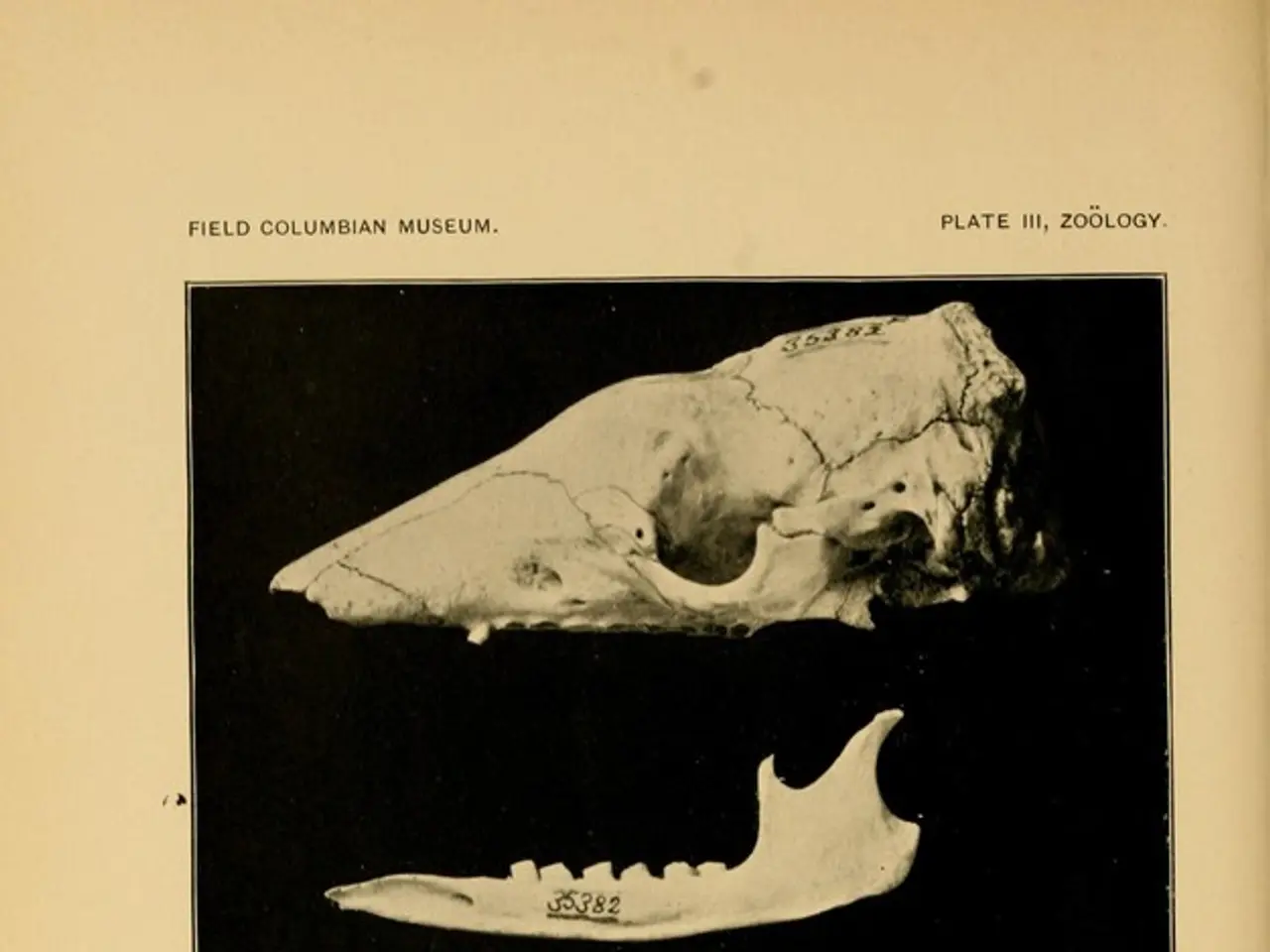Ewing sarcoma tumor: Signs and additional details
Ewing sarcoma is a rare type of cancer that affects bones or soft tissue, primarily in areas such as the long bones of the arms and legs, pelvis, chest, or spine. This article provides an overview of the symptoms, differences between Ewing sarcoma and common conditions, and survival rates associated with this disease.
Common symptoms and signs of Ewing sarcoma include persistent bone pain that often worsens at night, swelling, stiffness, or a lump in the affected area, fatigue or constant tiredness, unexplained weight loss, fever without a clear cause, broken bone without significant trauma, easy bleeding or bruising, weakness, numbness, or paralysis if the tumor affects nerves, and warmth or redness around the tumor site, especially in cases of recurrence.
It's essential to differentiate Ewing sarcoma from other conditions, such as bruises and lipomas. Ewing sarcoma presents with persistent, progressive symptoms often accompanied by systemic signs like fever and weight loss, and neurological symptoms if nerves are involved due to tumor growth or compression. In contrast, bruises result from trauma and typically improve over days to weeks, while lipomas are benign soft tissue tumors that present as painless, soft, mobile lumps under the skin without associated pain, systemic symptoms, or signs of inflammation.
If you notice a lump, it's crucial to contact a doctor, as it may be a sign of Ewing sarcoma. A person with Ewing sarcoma will feel pain in the area the tumor is present. Ewing sarcoma tumors often cause a soft mass or lump under the skin, which may feel warm to the touch and grow to the size of a golf ball or larger over time.
It's important to remember that while survival rates provide a rough idea of survival, they do not account for all factors. The 5-year relative survival rates for all stages of Ewing sarcoma are as follows: Localized - 82%, Regional - 70%, Distant - 39%, All SEER stages combined - 62%.
Ewing sarcoma can press on nerves or muscles, causing symptoms such as back pain, weakness, numbness, or paralysis in the arms and legs (rare). Additionally, sarcoma cells can break away from the tumor and travel through the bloodstream to other parts of the body, potentially causing new areas of cancer.
For more in-depth insight into individual cases and outlooks, it's recommended to consult with a doctor. For comprehensive, evidence-based information and resources on cancer, there is a dedicated hub available. Stay informed, stay vigilant, and seek medical advice when necessary.
- Ewing sarcoma is a type of cancer that primarily affects bones or soft tissue, and can cause symptoms such as persistent bone pain, swelling, and a lump in the affected area.
- This rare cancer can also lead to fatigue, unexplained weight loss, fever, broken bones without significant trauma, easy bleeding or bruising, and neurological symptoms if the tumor affects nerves.
- It's essential to differentiate Ewing sarcoma from other conditions, such as bruises and lipomas, by taking note of its persistent, progressive symptoms often accompanied by systemic signs and neurological symptoms, if nerves are involved.
- In case you notice a lump or feel persistent pain in a specific area, it's crucial to consult a doctor as it might be an indication of Ewing sarcoma.
- While survival rates for Ewing sarcoma provide a rough idea, they don't account for all factors, with 5-year relative survival rates for all stages being 82% for localized, 70% for regional, 39% for distant, and 62% for all SEER stages combined.
- In addition to pressurizing nerves and causing symptoms like back pain, weakness, numbness, or paralysis, sarcoma cells can travel through the bloodstream and potentially cause new areas of cancer.
- For more in-depth information on individual cases, outlooks, and resources, consult with a doctor or refer to evidence-based information and resources available on various medical platforms, particularly those dedicated to cancer, health and wellness, fitness and exercise, mental health, nutrition, skin care, and therapies and treatments.




